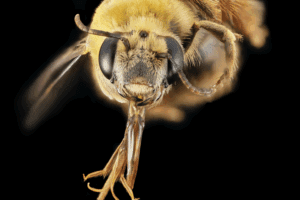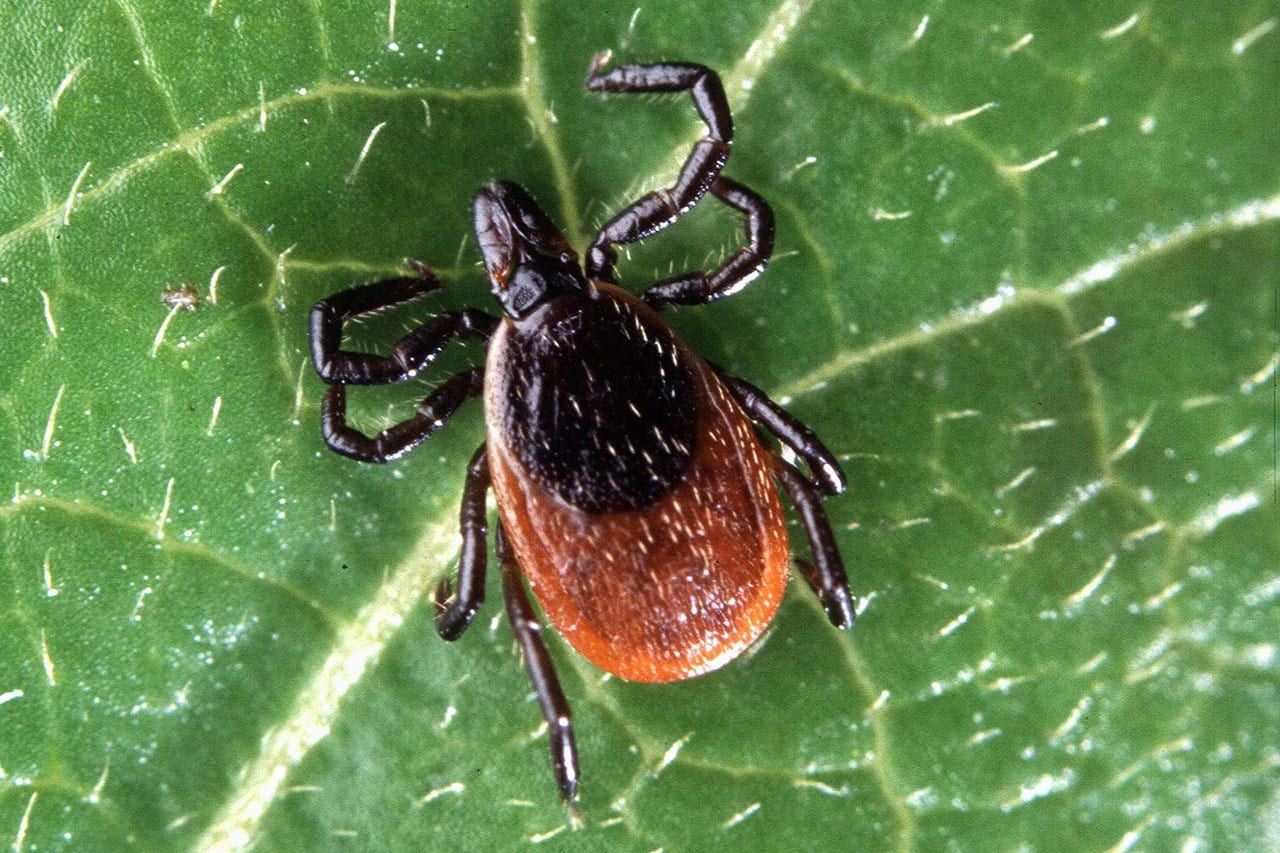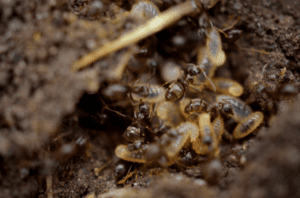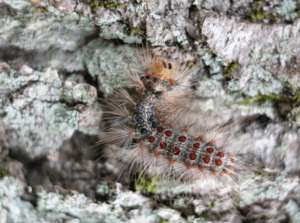

Ticks, small arachnids notorious for transmitting diseases, pose a significant health risk to humans and animals. Understanding their biology, behavior, and effective control methods is crucial for mitigating the dangers they present. In this article, we explore the world of ticks in New Jersey and how to get rid of ticks in the house using natural strategies for managing their populations.
What Does A Tick Look Like?
Ticks are small arachnids, typically ranging from the size of a pinhead to the size of a pencil eraser when fully engorged with blood. One of the most fascinating facts about ticks is that they have a compact, flattened body shape when unfed, but become more rounded and elongated as they fill with blood. This adaptation allows them to consume copious amounts of blood for their size, and to easily conceal themselves in the fur or feathers of their hosts, making them efficient parasites. Ticks have a distinctive appearance characterized by a round or oval-shaped body, which can vary in color from reddish-brown to black, depending on the species and life stage. Ticks also possess four pairs of legs, giving them a total of eight legs as adults. Larvae and nymphs have fewer legs. These legs are often dark-colored and end in hooked structures, which help the tick cling to its host as it feeds. If you're wondering how does a tick look like, these are the key visual characteristics to keep in mind.
Natural Remedies to Get Rid of Ticks
There are several natural tick prevention methods to control ticks in your house and yard, reducing their populations without resorting to chemical pesticides. Here are some effective approaches:
- Maintain a Clean Yard: Regularly mow your lawn and trim bushes and overgrown vegetation to reduce tick habitats. Ticks thrive in tall grass and dense foliage.
- Remove Leaf Litter: Rake up and dispose of leaf litter, as ticks often hide in moist, shaded areas created by fallen leaves.
- Create Tick Barriers: Place wood chips or gravel between wooded areas and your lawn to create a barrier that deters ticks from migrating into your yard.
- Use Natural Repellents: Essential oils like cedarwood, eucalyptus, and rosemary can act as natural tick repellents. Explore home remedies for ticks by learning how to create a homemade repellent spray using these oils.
- Attract Predators: Encourage wildlife that preys on ticks, such as birds, chickens, and certain insect species like ants, spiders, and ground beetles, by providing suitable habitats and food sources.
- Implement Tick Control Measures for Pets: Use tick-repellent collars, shampoos, or spot-on treatments for your pets to prevent ticks from infesting your home.
- Regular Inspections: Routinely inspect yourself, your family members, and pets after spending time outdoors to promptly remove any ticks before they have a chance to attach and transmit diseases.
What Are Natural Tick Repellants?
Natural tick repellents offer an alternative to chemical-based solutions and can effectively deter ticks while being safer for both humans and the environment. Here are some examples of natural tick repellents and how they can be used effectively:
- Essential Oils: Certain essential oils possess tick-repellent properties, including cedarwood, eucalyptus, peppermint, and rosemary. These oils can be diluted with water and sprayed onto clothing, skin, and outdoor surfaces to create a barrier against ticks. Additionally, adding a few drops of essential oil to carrier oils like coconut or almond oil can create a homemade repellent for direct application to the skin.
- Garlic: Consuming garlic can make your body emit a scent that repels ticks. Incorporating garlic into your diet or taking garlic supplements may help reduce the likelihood of tick bites.
- Diatomaceous Earth: This natural substance, composed of fossilized algae, can be sprinkled around the perimeter of your yard or in areas where ticks are likely to hide. Diatomaceous earth works by dehydrating and killing ticks upon contact.
- Nematodes: Beneficial microscopic organisms called nematodes feed on tick larvae, effectively reducing tick populations in your yard. Nematodes can be applied to soil in shaded areas where ticks thrive.
- Cedar Mulch: Using cedar mulch in landscaping can help repel ticks due to its natural oils and compounds that are toxic to ticks. Spread cedar mulch around the edges of your yard and in areas where ticks are likely to hide.
When using natural tick repellents, it's important to reapply them regularly, especially after rain or heavy sweating, as their effectiveness may diminish over time. Additionally, always perform a patch test before applying any repellent directly to your skin to ensure you don't have any adverse reactions.
Are Tick Bites Dangerous?
Tick bites can indeed pose significant dangers due to the potential transmission of diseases. Ticks are vectors for various pathogens, including bacteria, viruses, and parasites, which can cause illnesses in humans and animals. The risk of disease transmission from a tick bite depends on several factors, including the species of tick, the region in which the bite occurs, and how long the tick remains attached. Some of the most common tick-borne diseases include Lyme disease, caused by the bacterium Borrelia burgdorferi, which can lead to symptoms such as fever, fatigue, joint pain, and neurological complications if left untreated. Other diseases transmitted by ticks include Rocky Mountain spotted fever, ehrlichiosis, anaplasmosis, babesiosis, and tick-borne encephalitis.
The severity of these diseases can vary, with some causing mild symptoms that resolve on their own, while others can lead to chronic illness or even death if not promptly diagnosed and treated. Additionally, certain individuals, such as the elderly, young children, and those with weakened immune systems, may be at higher risk of developing severe complications from tick-borne diseases. Therefore, while not all tick bites result in illness, it's essential to take precautions to prevent tick bites and to promptly remove ticks if they do attach to minimize the risk of disease transmission. Regular tick checks after outdoor activities and the use of insect repellents can help reduce the likelihood of tick bites and associated health risks.
Can pest control get rid of ticks?
Pest control, including Integrated Pest Management (IPM), can effectively reduce tick populations, although complete eradication may be challenging due to ticks' resilience. IPM employs a holistic approach that considers the biology and behavior of ticks to implement targeted control measures while minimizing environmental impact.
One aspect of IPM involves habitat modification, where the environment is altered to make it less hospitable for ticks. Chemical control, another component of IPM, employs pesticides strategically to target ticks while minimizing harm to other organisms. This may involve the application of acaricides in areas where ticks are concentrated, such as along wooded edges or animal resting sites. Wearing protective clothing and conducting regular tick checks also play a role in reducing human-tick contact. While IPM can significantly diminish tick populations and lower the risk of tick-borne diseases, ongoing monitoring and management efforts are essential still to maintain control and minimize health risks effectively.
As experts in both commercial and residential pest control, Twin-Boro is committed to safeguarding your environment from tick infestations. Don't let these tiny arachnids threaten your health and well-being. Contact us today to schedule a consultation and visit our tick control page for more information on how to get rid of ticks in the house with our comprehensive tick control services.






